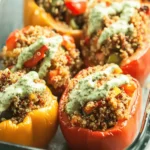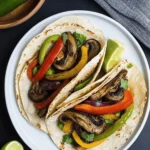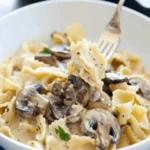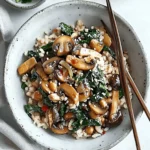Dandelion muffins are a unique, seasonal treat that incorporate the vibrant yellow blooms of dandelions, offering a touch of spring to your baking. These muffins are not only delicious but also use ingredients that celebrate the natural flavors of the season.
FULL RECIPE
Ingredients
- 1 cup dandelion petals, cleaned and chopped
- 1/2 cup sugar
- 1/2 cup milk
- 1/4 cup vegetable oil
- 1 large egg
- 1 1/2 cups all-purpose flour
- 1 tbsp baking powder
- 1/2 tsp salt
- 1/2 tsp vanilla extract
Directions
- Preheat your oven to 350°F (175°C) and grease or line a muffin tin with paper liners.
- In a large bowl, combine the sugar, milk, vegetable oil, egg, and vanilla extract. Stir until well combined.
- In a separate bowl, mix the flour, baking powder, and salt.
- Gradually add the dry ingredients to the wet ingredients, stirring until just combined.
- Gently fold in the dandelion petals.
- Spoon the muffin batter into the prepared muffin tin, filling each cup about two-thirds full.
- Bake for 15-20 minutes, or until a toothpick inserted into the center of a muffin comes out clean.
- Allow the muffins to cool in the tin for a few minutes before transferring them to a wire rack to cool completely.
Nutritional Information
- Calories: 150 per muffin
- Protein: 2g
- Carbohydrates: 25g
- Fat: 6g
- Fiber: 1g
- Sugar: 12g
The History of Dandelion Muffins
Dandelion muffins have a rich history that blends the concept of foraging with home baking. Dandelions, once considered a nuisance in gardens and lawns, have long been used in culinary and medicinal practices. In many cultures, dandelion petals are utilized in jams, wines, and even as a salad topping. The idea of incorporating these bright yellow flowers into baked goods like muffins is a way of embracing the natural world and making use of what is abundant around us. This recipe has roots in old-fashioned folk recipes, where using wild ingredients was a necessity, especially in spring when fresh produce was scarce.
The Role of Dandelions in Traditional Cooking
In traditional cooking, dandelions have been appreciated not just for their vibrant color but for their health benefits as well. The dandelion plant is known for its high content of vitamins A, C, and K, as well as its mineral content, particularly calcium and iron. These healthful properties make dandelions a prized ingredient in folk medicine. By using dandelions in a recipe like muffins, you’re adding a dose of nutrients to a delicious treat that might otherwise lack any health benefits. Foraging for dandelions is also a great way to connect with nature and reduce reliance on store-bought ingredients.
Health Benefits of Dandelions
Dandelions are more than just a pretty flower—they are packed with nutrients and antioxidants that can contribute to a healthy diet. Dandelions are known to support liver health, improve digestion, and reduce inflammation. They are also high in fiber, which can aid in digestion and promote a healthy gut. Adding dandelion petals to your muffins not only makes the recipe more unique but also adds an extra layer of nutrition. The bright yellow petals are rich in vitamins, and incorporating them into your diet can support your overall well-being.
The Rise of Foraging in Modern Cooking
Foraging is a growing trend in modern cooking, with many chefs and home cooks turning to the wild for ingredients. Using dandelions in cooking is an excellent example of how people are reclaiming traditional methods of cooking while embracing sustainable food practices. Foraging is an eco-friendly way to source ingredients, as it reduces the carbon footprint associated with mass food production and transportation. For those who enjoy spending time outdoors, foraging can be a rewarding way to discover new flavors and ingredients.
How to Harvest Dandelions Safely
If you’re planning to forage for dandelions to make your muffins, it’s important to do so safely. First, make sure you’re collecting dandelions from an area that has not been sprayed with pesticides or herbicides. Look for dandelions that are in a clean, organic environment, such as a field or your own backyard. Always wash the dandelion petals thoroughly to remove any dirt or contaminants. Only use the petals of the dandelion, as the stems and leaves can sometimes be bitter. If you’re new to foraging, consider consulting a local foraging guide or an expert before harvesting plants from the wild.
The Texture of Dandelion Muffins
Dandelion muffins have a unique texture that sets them apart from typical muffin recipes. The addition of dandelion petals gives the muffins a slightly floral flavor, while the crumb remains soft and moist. The petals themselves blend seamlessly into the batter, adding a light crunch without overpowering the other ingredients. This delicate texture is enhanced by the balance of the other ingredients, creating a muffin that’s tender yet sturdy enough to hold together when you bite into it.
Flavor Profile of Dandelion Muffins
Dandelion muffins have a mild, slightly sweet, and floral flavor that’s hard to pinpoint but very appealing. The dandelion petals themselves don’t dominate the taste, but they provide a subtle, earthy undertone that pairs well with the sweetness of the sugar and the lightness of the flour. The muffins aren’t overwhelmingly floral, but the dandelion gives them an interesting twist that can be likened to other edible flowers used in cooking, such as lavender or elderflower. If you enjoy experimenting with unique flavors, dandelion muffins are a wonderful way to incorporate this wild ingredient into your baked goods.
The Perfect Pairing for Dandelion Muffins
Dandelion muffins are versatile and can be enjoyed in many different settings. For breakfast, pair them with a hot cup of tea or coffee to complement the floral flavors. They also make a delightful snack with a dollop of clotted cream or a spread of honey. For a more savory take, serve them alongside a light salad or a bowl of soup. Dandelion muffins are also excellent for a picnic or a garden party, where their bright yellow color can add a touch of spring cheer to your spread.
Substituting Dandelions in the Recipe
If dandelions aren’t available or you prefer to use a different ingredient, there are several substitutions that can work in place of dandelion petals. You could try other edible flowers, like violets or pansies, which offer a similar floral flavor. Alternatively, you could experiment with adding herbs such as lavender or rosemary for a different twist on the classic muffin. While these substitutions will alter the flavor, they still maintain the spirit of the original recipe, which is about using natural, fresh ingredients.
Dandelion Muffins as a Seasonal Treat
One of the best things about dandelion muffins is that they are a perfect seasonal treat. Dandelions typically bloom in early spring, making them a great way to celebrate the change of seasons. Their bright yellow flowers are a sign that warmer weather is on the way, and using them in a recipe like muffins helps capture the essence of spring. Seasonal ingredients are often more flavorful and nutrient-dense than those grown out of season, so making dandelion muffins in the spring allows you to take full advantage of the freshness and taste of these flowers.
The Eco-Friendly Aspect of Foraging
Foraging for dandelions is an eco-friendly way to source ingredients because it doesn’t rely on industrial farming methods. By foraging, you’re reducing your carbon footprint and avoiding the need for pesticides or synthetic fertilizers that are typically used in mass agriculture. This aligns with a growing movement toward more sustainable eating habits, where people seek out local, seasonal, and wild ingredients to minimize their environmental impact. Dandelions, in particular, are hardy and grow abundantly without the need for human intervention, making them a sustainable option for wild food enthusiasts.
Cultural Significance of Dandelions
Dandelions hold cultural significance in many parts of the world. In some cultures, they are seen as symbols of resilience and growth, as they are often one of the first plants to bloom in the spring, signaling the end of winter. In other cultures, dandelions are used in traditional remedies, believed to have healing properties. Dandelions are also associated with wishes—when their seeds are blown away, it is said that the wish will come true. By incorporating dandelions into your cooking, you’re connecting with this rich cultural symbolism and incorporating a sense of history into your modern culinary practices.
Baking Tips for Dandelion Muffins
When baking dandelion muffins, there are a few tips to keep in mind to ensure the best results. First, be sure to sift the dry ingredients before adding them to the wet ingredients to prevent clumping and ensure an even texture. Second, don’t overmix the batter. Overmixing can lead to dense muffins, so stir just enough to combine the ingredients. Lastly, if you’re using freshly foraged dandelions, be sure to remove any stems or leaves, as these can impart a bitter taste to the muffins. Using only the petals will give you the best flavor.
How to Store Dandelion Muffins
To keep your dandelion muffins fresh, store them in an airtight container at room temperature for up to three days. If you want to extend their shelf life, you can freeze them for up to three months. To freeze, wrap the muffins individually in plastic wrap or place them in a freezer-safe bag, and thaw them at room temperature when you’re ready to enjoy them again. Freezing your muffins ensures that you can enjoy the flavors of spring even when dandelion season is over.
The Importance of Using Fresh Ingredients
Fresh ingredients make a noticeable difference in the taste and texture of baked goods, and this is particularly true for dandelion muffins. Using freshly foraged dandelions will give your muffins a more vibrant flavor, while also allowing you to experience the full range of nutritional benefits the flowers provide. Fresh ingredients often have more depth of flavor, which is especially important when baking with something as unique as dandelions.
Experimenting with Dandelion Muffin Variations
Once you’ve mastered the basic dandelion muffin recipe, feel free to experiment with different variations. You can add other springtime ingredients, such as lemon zest, for a citrusy twist. Or, for a richer flavor, try incorporating a handful of chopped nuts like walnuts or pecans. You could also experiment with different sweeteners, such as honey or maple syrup, to add depth to the flavor. The possibilities are endless, and each variation brings a new spin on this unique recipe.
Dandelion Muffins for Special Occasions
Dandelion muffins make a wonderful addition to any special occasion, from brunch gatherings to garden parties. Their bright color and floral flavor make them a conversation piece, and they can be easily dressed up with a dusting of powdered sugar or a drizzle of lemon glaze. Dandelion muffins also make a thoughtful homemade gift, especially when presented in a decorative basket or wrapped in parchment paper.
Advertisement
The Environmental Impact of Foraging
Foraging for wild ingredients like dandelions is not only fun, but it also has positive environmental impacts. By foraging, you are tapping into the natural abundance of plants that grow without human intervention. This can help reduce the demand for farmed crops, which require large amounts of water, fertilizer, and pesticides. Foraging helps people reconnect with the land and cultivate a deeper appreciation for the natural world.
Conclusion
Dandelion muffins offer a delightful and sustainable way to embrace the flavors of spring while making use of an often-overlooked natural resource. By incorporating foraged dandelion petals into your baking, you not only create a unique and nutritious treat, but you also connect with the traditions of folk medicine and foraging. The health benefits of dandelions, combined with their mild floral flavor, make these muffins a perfect seasonal snack or dessert. Whether you’re sharing them at a spring gathering, gifting them to a friend, or simply enjoying them at home, dandelion muffins serve as a beautiful reminder of the abundance that nature provides. With their rich cultural history, eco-friendly sourcing, and delicious flavor, these muffins are much more than just a recipe—they’re a celebration of the season and an invitation to reconnect with the natural world.






